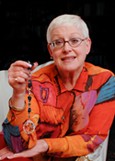Basics of Hypnosis
 Therapeutic Hypnosis is a tool that gives you the ability to overcome whatever may be blocking your success in attaining your goals – any goal – no matter how that success might manifest itself, in the physical, emotional, professional, personal or spiritual life. Therapeutic Hypnosis satisfies your agenda, not the agenda of the therapist
Therapeutic Hypnosis is a tool that gives you the ability to overcome whatever may be blocking your success in attaining your goals – any goal – no matter how that success might manifest itself, in the physical, emotional, professional, personal or spiritual life. Therapeutic Hypnosis satisfies your agenda, not the agenda of the therapist
Hypnosis is a natural state of mind we flow into and out of all day long, rising and falling in varying degrees of conscious awareness. We naturally experience hypnosis when we daydream. Whenever we are thinking creatively, watching television or a movie, reading a book or enjoying theatre, we are hypnotized. When we are at the threshold between sleep and wakefulness, we are in the deepest state of naturally induced hypnotic trance.
Simply put, to be hypnotized is to be more suggestible. When you don’t understand what hypnosis is or recognize when you are naturally hypnotized, you are taking in suggestions from the outside world — the often chaotic energy, people’s bad moods, as well as your own thinking. When those suggestions are negative, as is so often the case, you can end up feeling depleted, fearful, etc., and wonder how that happened. When you understand what hypnosis is and recognize when you are in that natural state of hypnosis, you have the power to refuse to take in negative suggestions and can open yourself to positive ones. That understanding alone puts you in control of what you validate moment to moment what you take in and what you refuse to take in!
The Conscious and the Subconscious Parts of the Mind
The conscious part of the mind processes information: it organizes, analyzes, assesses and plans. It is logical, reasonable and can change its point of view at will.
The subconscious mind, on the other hand, is not logical or reasonable. It simply supports the conscious, thinking part of the mind, but it has no ability to recognize a thought or concept as positive or negative. The subconscious mind is like a child: It takes everything literally. It wants to support and help achieve what it is hearing from the conscious part of the mind.
Have you ever awakened dreading the day? The subconscious mind is absorbing the dread created in the conscious mind and the other negative feelings that accompany it, i.e., self-doubt, etc. It doesn’t know the difference between positive and negative; rather, it takes this thinking literally and works to support it. Thus the possibility for having a good day becomes increasingly remote the longer we engage in negative thinking.
The memory is in the subconscious mind. With the help of billions of tiny interconnecting nerve cells, everything we have ever seen, heard, studied, smelled, tasted, felt or experienced in any way is permanently stored there, unless some portion of the brain sustains injury.
 The subconscious mind regulates all involuntary body functions: respiration, digestion, elimination, blood pressure and circulation, hormones, nerve response, and the natural power of the body to heal itself, etc.
The subconscious mind regulates all involuntary body functions: respiration, digestion, elimination, blood pressure and circulation, hormones, nerve response, and the natural power of the body to heal itself, etc.
Habitual conduct is also carried out in the subconscious mind. When you dress, you don’t concentrate on which arm goes into which sleeve, nor do you think “left foot, right foot” when you run down the stairs. The subconscious part of the mind directs all familiar and habitual actions.
The subconscious mind generates and releases energy of thought and behavior. Behavior is nothing more than energy used to express something – verbal and nonverbal statements, attitudes and beliefs. If the conscious mind doesn’t direct this energy toward constructive goals, the energy may be directed by chance or circumstance toward destructive goals, such as fear, anxiety, guilt, depression, failure or even illness.
The subconscious mind takes in ideas from the conscious mind. However, if the conscious mind changes its point of view after an idea has been accepted by the subconscious, the subconscious mind does not similarly change. For example, little boys in Western culture are often told, “Big boys don’t cry.” Although this approach is changing, many young, middle-aged and older men in our society who might feel like crying don’t (or can’t).
Here’s how it works (remember, the subconscious mind is the seat of the emotions; all emotion comes from the subconscious mind): When a little boy is told, “Big boys don’t cry,” he is probably crying, which means he is having a very strong feeling. The stronger the feeling, the deeper the hypnosis. The deeper the hypnosis, the more suggestible he is. The boy is given the message (suggestion) that “big boys don’t cry.” Trying to be a “big boy,” he soon stops crying. Life becomes quieter for a while, until something upsetting happens again when the little boy acts out similar strong feelings and the message is repeated. This suggestion is reiterated many, many times throughout his boyhood, and he carries the lesson, well-learned, into adulthood, lodged in the subconscious mind.
The subconscious mind is the dominant part of the mind. It is remarkable to consider how we’re ruled by the part of the mind we’re unaware of. The conscious aspect of the mind, on the other hand, doesn’t even know what it doesn’t know. The nature of the conscious mind causes the individual to believe that what is consciously known is all there is.
Every time you have a feeling – emotional or physical – think about something from the past, dream or dread something in the future, or think creatively in any way, you are accessing the subconscious mind, because it is there that these activities take place. Whenever you access the subconscious mind, it can be said that you are hypnotized. You have selective consciousness. You can select that which you want to be conscious of. You become available to the vast power of the subconscious mind and can use it at will.
Are You Ready To
Transform Your Life?
Therapeutic Hypnosis is a tool that gives you the ability to overcome whatever may be blocking your success in attaining your goals

